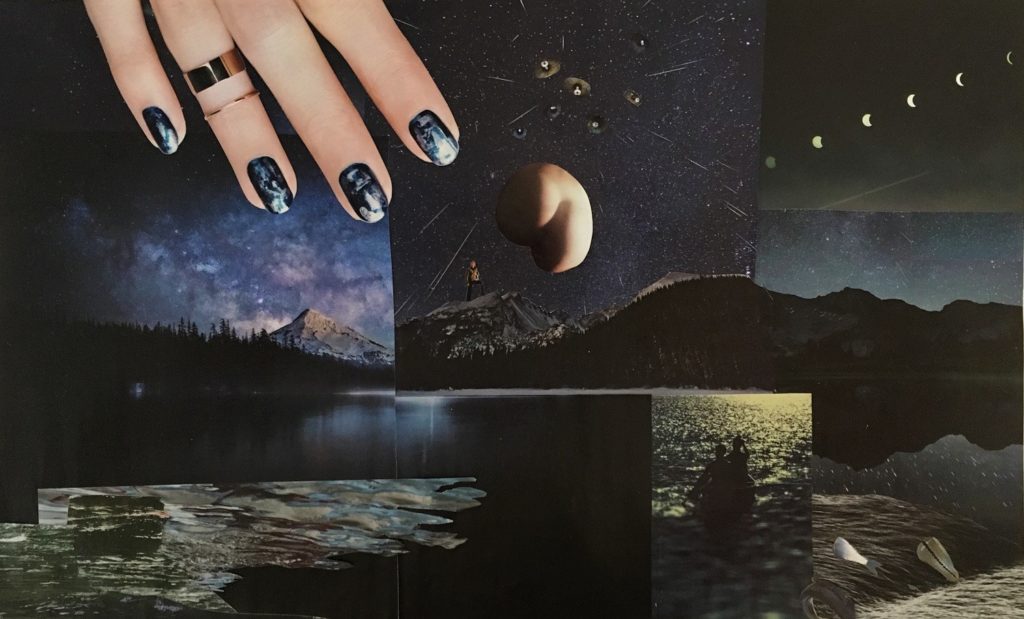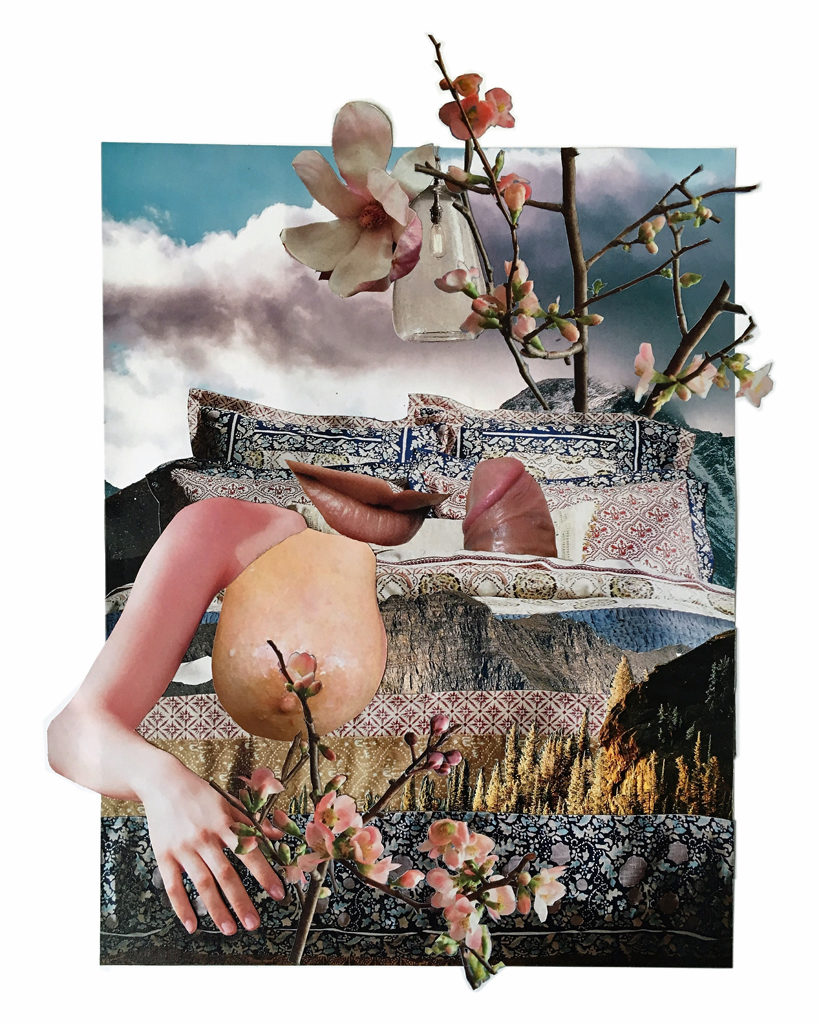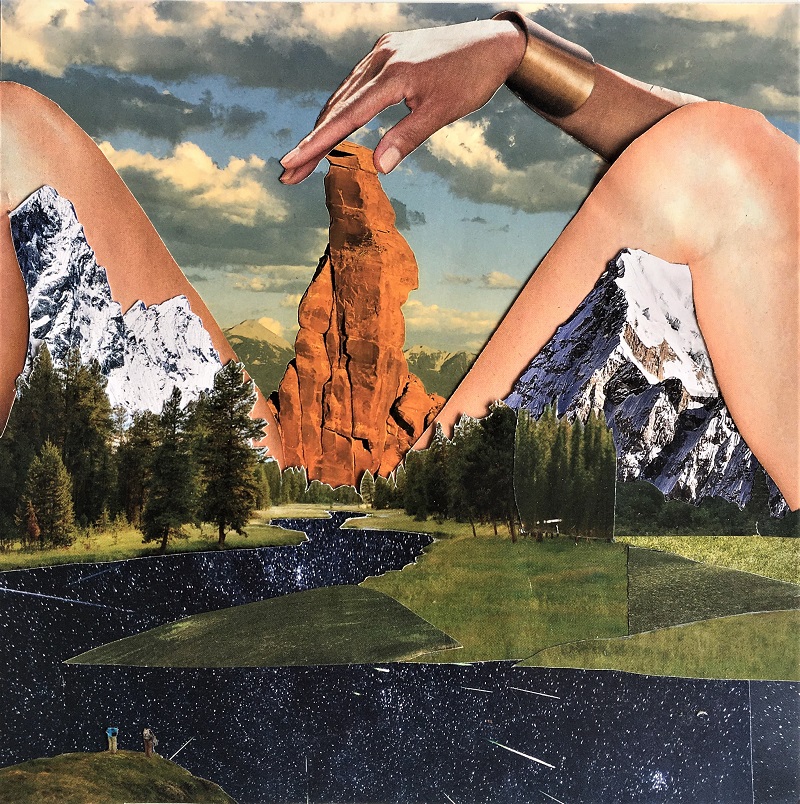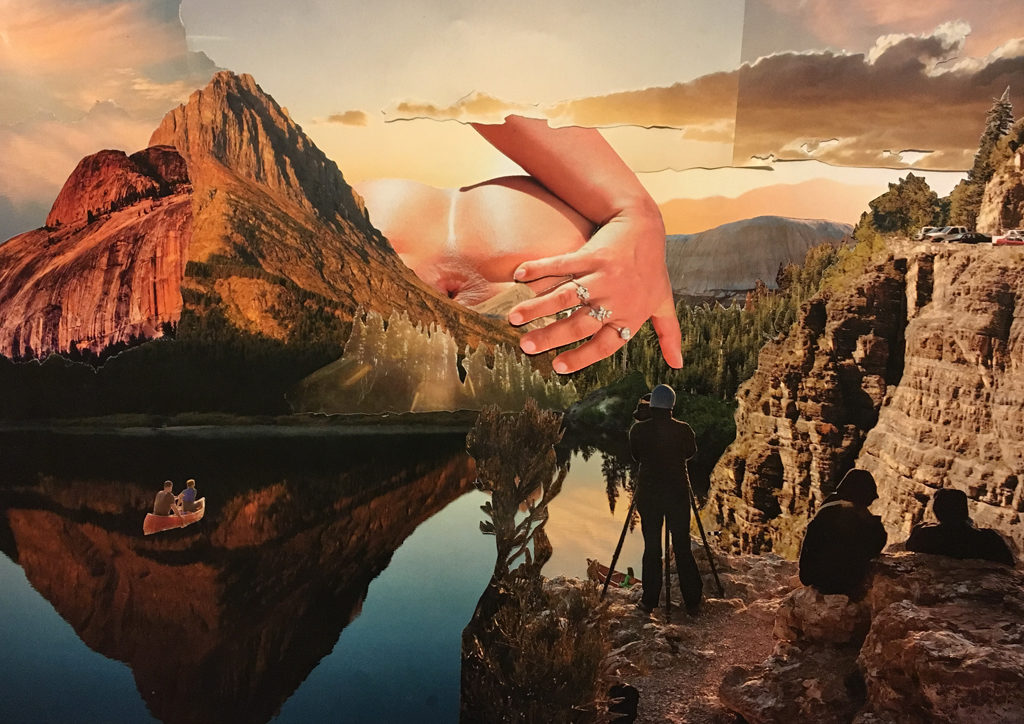Black Market is our bi-monthly art and craft sale that we host at the Cambridge Elks Lodge. Everything from screen prints, ceramics, one-of-a-kind artworks, vintage ephemera, coffee, you name it, are sold and bought by patrons entering the market for $1. Laurel Hoffer is a Black Market veteran. She sells prints of her handmade collages. Chloe from Boston Hassle’s art team got in touch with Laurel to talk more about her involvement in Black Market as well as her general involvement in Boston’s art scene.
Chloe: You attended the School of the Museum of Fine Arts. I also went to art school in Boston, but I found that a lot of people felt the need to leave to a larger city after their degrees. Can you tell us about any unique aspects of Boston that have drawn you to keep practicing here after college?
Laurel: A lot of my friends from SMFA moved to NYC after graduating or having any small success as an artist in Boston. And to be honest, I’ve also found it really difficult to make a career for myself as an artist here. The main reason I’ve stayed is simply because I like this city. I’m originally from rural Indiana, and I moved back home for a few months after graduating in 2009. I moved back to Boston the following January and I’ve lived here since. There are some resources for artists looking for opportunities, like the Mass Cultural Council’s ArtSake blog, and galleries with open calls for curatorial proposals. One nice thing about Boston is that it’s so small that once you do even a little networking, you quickly have ties at all the galleries and museums.

With the Moon, So the Tides; She Stirs These Cambrian Stars to Life
C: Popup markets like Hassle’s Black Market are amazing ways to strengthen creative communities. In what ways have markets like the Black Market helped you widen your audience and creative circle? Any particular stories you want to share?
L: The Black Market has been so helpful for me as an artist. It finally gave me a space show my work in the way that I wanted it to be seen, and a way to just chat with people about my work. Lots of people say, “oh, you should look up so-and-so’s work” and I get new inspiration that way. I’ve gained a few fans that come back every time because of the Black Market which is just about the best feeling in the world, and it encourages me to make new work, too. I’ve also met some really great artists at the Market. It sounds really cheesy but it really is inspiring and encouraging to just be in a room full of creative people putting their work out there.

I Am Monstrous and Strong, Mine Is the Milk of Life
C: Selling work at craft markets is certainly different from trying to sell work in galleries. What is the draw for you to sell in a market as opposed to hustling to get your work shown and purchased in galleries? Do you participate in both modes of distribution?
L: I’ve shown my work at a couple nonprofit galleries like Woman Made in Chicago, and I’m a member of the feminist Hera Gallery in RI. But my experience at nonprofit galleries is that the focus is less on selling work and more on showing new ideas and perspectives. Selling at the Black Market is, for me, more about getting my work out there than about making money. Because after considering the hours spent on making a piece, and the cost of having prints made and shipped, after the vendor fee, and the cost of my time spent sitting at a table all day, I’m not making a profit. But the ego boost I get from the Black Market is worth it. That said, selling prints at a market rather than the original piece means that the price can be way lower, and it makes my work more accessible to a larger group of people.

Alas! Our GodQueen’s Touch From Her Heavenly Heights Erects Rocks, Fissures, Galaxy Nights
C: The bulk of the work that you have sold at Black Market is collage. Do you know exactly what you want to make before you start a collage, and find images to fit that vision? Or do you left found images speak to you first?
L: When I start a collage, I usually have some sort of general idea in mind that I want to convey. Then I’ll start to flip through magazines looking for the right images, colors, and shapes that I need to make it happen. A lot of times I get stuck, and then I’ll just start trying random images. Like, this arm isn’t what I want, but does it work better in the composition? What if I turn it like this? What if I try something with this color? Or this texture? If I don’t allow for changes and flexibility then it ends up falling flat. It’s the strange, uncanny, and unexpected elements that make some of my best works so compelling.

Behold! This Glorious Morn, She Brings Us Life Anew, She Comforts Us With Golden Shower
C: Your collage subject matter can be a little on peculiar side. But the crazy narrative that I see makes your work so charming! Can you explain your wonderful balance between the typically feminine imagery I see like flowers and domestic scenes, with the grotesque and unconventional?
L: I’m always thinking about what feminist literary critic Elaine Showalter calls the “female wild zone,” the space outside of patriarchal boundaries where women are free to express themselves. Here, in my visual landscapes of the female wild zone, women are fierce and tender, sexual and grotesque, archetype and psyche, they are both the source of life and larger than life itself. And on top of that, I enjoy the challenge of taking something cherished, sexualized, and idealized and, with just a slight modification, turning it into something unsettling and grotesque.

